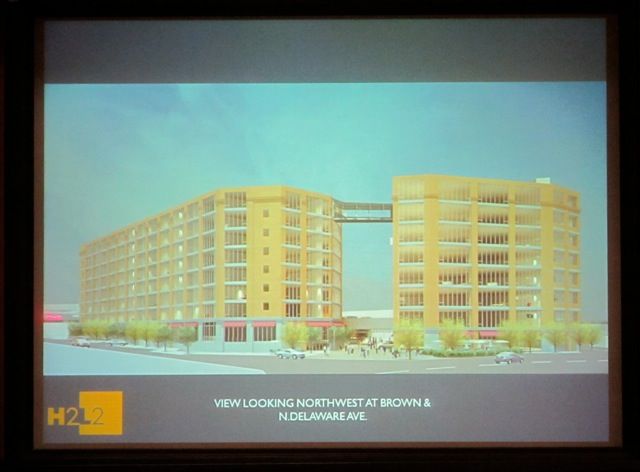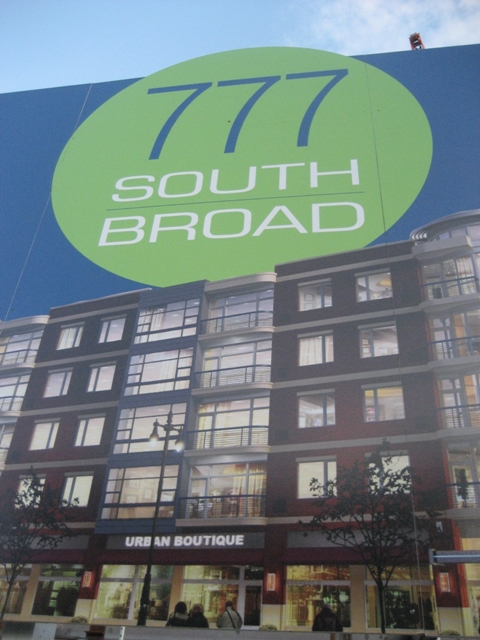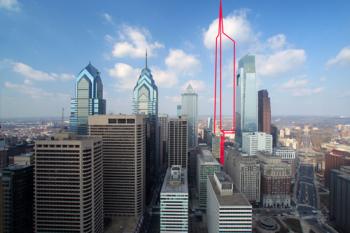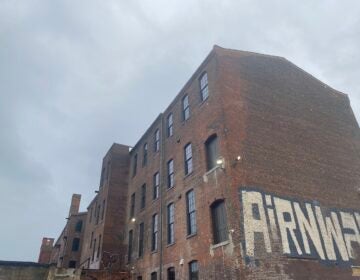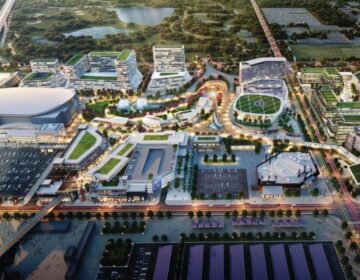Cracks in the ice that’s hemming in commercial real estate?
When developer Michael Samschick of Core Realty stood before the city Planning Commission on Dec. 8 with his architect in tow, something that’s been unusual over the past 18 months occurred: It was revealed that the project for which the company was seeking approval – the redevelopment of a riverfront industrial site – actually had a loan on the line. From an actual bank.
The credit markets have been so frozen for so long now that a simple construction loan – formerly as easy to acquire as a driver’s license – was noteworthy. Or so it seemed. City real estate professionals say there is an emerging market now for debt on certain kinds of properties. Namely, apartments for rent outside of Center City.
“There’s not a lot of product out there that people feel comfortable building on,” said Peter Kelsen, a land use and zoning attorney with Blank Rome LLC and a member of the Zoning Code Commission. “I’ve got a couple guys that have been moving ahead with projects that have been financed, and they’re going forward. Their sales are slower, they’re not robust … The locations they’re looking at – some are in Fishtown, some in Port Richmond and so forth … . They’re not setting the world on fire, but they’re holding their own.”
Samschick’s project on North Delaware Avenue at Brown Street is called “Waterview Grande,” a proposed mixed-use redevelopment of two eight-story cold storage facilities built in the 1930s. It is within the Central Delaware Riverfront Overlay District and will have 192 apartments if built out.
Though the apartments are now labeled “luxury,” most opportunities can be found in “affordable housing,” Kelsen said. “That’s where money is coming in.”
He cited a half dozen such properties around the city which have been approved and are moving forward. Financing them has called for multiple resources, Kelsen noted, including some federal stimulus money and grants from the Pennsylvania Housing Finance Agency (PHFA). In addition to plenty of upfront equity and plain vanilla conventional loans, financing can come from tax credits, loans from public agencies in the city and money from the Department of Housing and Urban Development.
Affordable housing is “an area that had really, really been impaired for a while, because the tax credit investors weren’t out there, and now these projects, unlike the market-rate projects, are moving ahead significantly,” Kelsen said.
“The sources of debt are very difficult to say the least,” agreed Walt D’Alessio, a longtime Philadelphia commercial real estate executive and economic development specialist. “The only things really getting considered for financing are rental and student housing, assisted living and senior housing. They underwrite pretty well in this market, along with mid-level apartments in Center City, and in the far Northeast [Philly].”
But that’s not new construction, D’Alessio stressed – just existing properties trading hands.
There are a few projects in Center City that had started and are moving along because they were pre-financed, Kelsen said, such as Carl Dranoff’s 777 South Broad project, which is almost complete. But they are rare these days.
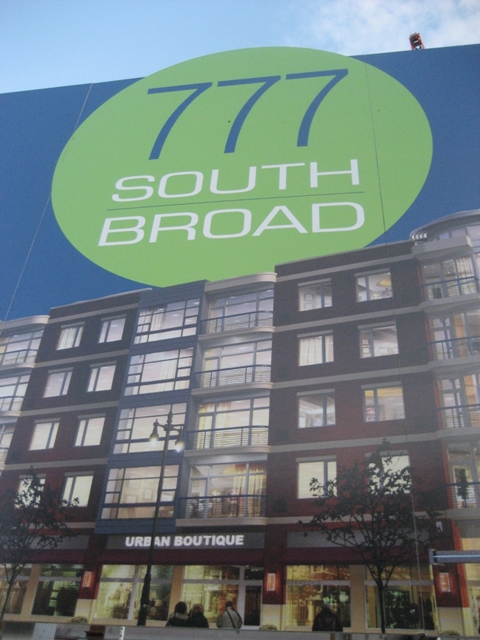
“That was ahead of the curve and ahead of the major change in the financing market,” Kelsen explained. “I don’t think you’re going to see any other high-end, high-density residential projects in Center City, even on the rental side, right now.”
Instead, loans are going to projects in Nicetown, or Allegheny, or Mount Airy, he said. Even one in Southwest Philly. Lenders are nibbling around the city’s edges.
For would-be condominium tower developers – and there are several large projects that have been presented at Planning Commission meetings over the past two years – things are going to have to wait a good bit longer.
Craig Schelter, of the Developers’ Workshop (and, like D’Alessio, a former Philadelphia Industrial Development Corp. executive), said condos are pretty much out of the picture for Center City, but not so much because of scarce lending.
“Even if there were enough people looking to buy right now, they’ve got to have enough income,” Schelter said, and that’s assuming improved unemployment numbers as the recession fades. Schelter said it’s not just commercial developers who are having a hard time getting loans. Anybody looking to buy a new condo is having trouble finding a regular consumer loan to do so.
Between 2000 and 2009, Center City added 12,121 new housing units, according to Builder magazine. “Like other metro markets, Philadelphia has its own condo glut problem,” wrote Builder’s John Caulfield in October. “Right now, there’s a two-and-a-half-year supply of unsold condos on the market.”
The upside? Philly’s unemployment picture is better than most parts of the country. And in Center City, residents who work in the city’s strongest sectors – universities and health care – have relatively high incomes.
“I think Philadelphia is doing remarkably well considering the national economy,” D’Alessio said. “We are holding employment in some areas that are important to the continued occupancy of space.”
“A lot of it is banks are looking for specific conditions to be existing before lending gets going again,” Schelter said. “I think there is some money there. It’s never going to be 90 percent loan-to-value [ratio] again – no. People have to put more equity into it, but that’s understandable.”
Outliers
Bart Blatstein, principal of Tower Investments and the developer of the successful Piazza at Schmidt’s in Northern Liberties, is bullish on Center City’s residential outlook. But, yes, he said – lending to proven borrowers in the outlying areas Kelsen mentioned is not only happening, it never really stopped. “There’s been no issue,” he said. “I’m continuing to build and develop.”
Blatstein said earlier this week that he is getting access to re-financing as well as “the much sought-after construction” loans. US Bank is one of his lenders, he said. The bank was also named by other local industry veterans as one institution that has consistently been making deals.
“It’s a combination of 32 years of borrowing and paying back loans, that and solid projects,” Blatstein said. At the moment, lenders want to deal mainly with people who have been in the industry for quite some time.
“I still have access to money,” he said. “I’m very fortunate. The banks’ withdrawal from the market is normal. … But they’re continuing to lend. They’re being picky and choosy, but they’re lending. At the end of 2010, it’s going to be a lot better.”
Blatstein, who is still at work on projects in and around the Schmidt’s site, said he’s about to close on a “large eight-figure” loan, but would not reveal for what project – only that it is for new construction. He said that during 2009, seven of his projects have been under various stages of construction, and that the first phase of his redevelopment of the State Office building at Broad and Spring Garden streets is on course for 2010.
Blatstein’s access to capital appears only to be getting stronger. He is also working with Philly-based NAI Bluestone Real Estate Capital to form an “institutional-equity fund” of between $100 million and $150 million, according to a November article in the Philadelphia Inquirer. The fund will invest in projects in and around the city in the first part of 2010.
Retail’s woes
One potential hiccup for Samschick’s Delaware Avenue project is that the first floors of both buildings are slated for retail tenants: shops, bars and restaurants, presumably. As anyone who pays even scant attention to the economy knows, retailers have seen better days. And as a commercial real estate sector, retail is a hard sell for lenders.
“With most retail, nothing’s going to get built until we see how the market’s shaking out,” Kelsen said.
“The ground is littered with bankrupt retailers,” said D’Alessio. “It’s very hard to do underwriting of retail space at this point,”
Joe Coradino, executive vice president of Pennsylvania Real Estate Investment Trust (PREIT), is a veteran retail specialist. He said that some of PREIT’s projects in that troubled sector are getting financed, though he would not be specific, deferring details to the company’s vice president of finance.
“It’s certainly been a challenging environment, no question about that,” Coradino said. “But, A, we have done it, and B, it is getting better. I wouldn’t say it’s normalized by any stretch, but it is getting better, and I think that’s pretty much consistent with the economic environment.”
In July, Wharton School marketing professor Stephen J. Hoch told Knowledge@Wharton that things are so bad among retailers that many are threatening to close if they don’t receive concessions from landlords. “The REITs have adapted and tried to be proactive,” Hoch told K@W. “It’s taken a catastrophe to wake up and smell the coffee.”
With new developments, there tends to be “generations of tenants,” Blatstein explained. So while rents for shops at the Piazza at Schmidt’s are low, he’s building a list of people who want to locate there. “It takes time,” he said. “In my kind of development, you have to be very patient and very impatient at the same time. You have to build an infrastructure – a critical mass of shops and restaurants.”
The big question mark in the sky
So what does this mean for the Philly skyline? Likely, it means the one we have now is the one we’ll have for at least several years to come, and probably the one we’ll see on New Year’s Eve 2015, too.
As for the hoped-for American Commerce Center, check back in a few years, most industry watchers say.
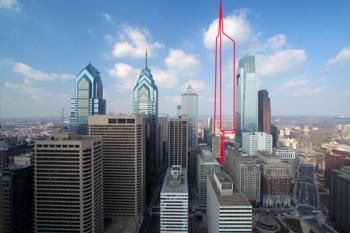
Graphic courtesy of Brad Maule/Phillyskyline
“There are a number of large tenants that continue to express interest,” said Kelsen, who represents the would-be developer of the ACC. “There’s nothing definitive at this point.”
“I don’t think there’s a chance of any new office building of any size in the next couple years, in Center City in particular, but probably not even in any of the suburban markets,” commented D’Alessio. “The American Commerce Center is a great location, but there’s no demand for the space out there that I can see. Every business I know is looking at how to cut costs.”
Breaking it down into basics, D’Alessio says firms look at their people, their energy costs and their space. Companies with existing space that’s not fully occupied will try to sublease – and in a very competitive market.
“There’s a lot of concern still out there as to whether we are having a rebound, but everybody has figured out how to do what they do more efficiently – that usually means with less people and less space, and I’m not so sure that even when the market improves that they’re going to go back to the way they were.”
There’s an upside to that scenario, known to commercial real estate brokers across the land as the “new normal.” More energy efficiency means greener buildings, even if not intentionally so. Also, things could, and have been, worse.
“In Philadelphia, we’re as good as anyone else is, which is new for us in recessionary periods,” D’Alessio said. “The mid-Atlantic has a better economic vitality in this overall marketplace we’re dealing with, particularly as it relates to real estate.
“We’re a different economy than we were in previous recessionary periods, and therefore we’re doing better – better than we have in our history, and we’re doing pretty nicely in comparison to some of our peers.”
Contact the reporter at thomaswalsh1@gmail.com.
WHYY is your source for fact-based, in-depth journalism and information. As a nonprofit organization, we rely on financial support from readers like you. Please give today.



